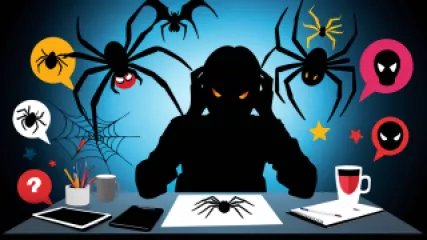What Are the Different Types of Phobias?
What Are the Different Types of Phobias?
Phobias are intense, irrational fears of certain objects, situations, or activities. While everyone experiences fear and anxiety from time to time, those with phobias have an exaggerated and debilitating response that can significantly impact their daily lives. From agoraphobia to zoophobia, there is a wide range of phobias that people can struggle with. In this comprehensive guide, we'll explore the various types of phobias, their symptoms, and effective strategies for managing them.
Understanding Phobias
Phobias are classified as anxiety disorders, characterized by an excessive and persistent fear of a specific object or situation. These fears are often irrational and disproportionate to the actual level of danger posed by the trigger. Individuals with phobias will go to great lengths to avoid the object or situation that causes their fear, even if it means significantly disrupting their lives.
Phobias can develop as a result of a traumatic experience, learned behavior, or genetic predisposition. Some phobias may also be rooted in evolutionary survival instincts, such as the fear of snakes or heights. Regardless of the underlying cause, phobias can have a significant impact on an individual's quality of life, leading to avoidance, social isolation, and even panic attacks.
Common Types of Phobias
Phobias can be categorized into several broad categories, each with its own unique characteristics and triggers. Let's explore some of the most common types of phobias:
Specific Phobias
Specific phobias are fears of a particular object or situation, such as spiders, heights, or flying. These phobias are the most common type and can be triggered by a wide range of stimuli. Some examples of specific phobias include:
- Arachnophobia – Fear of spiders and other arachnids
- Acrophobia – Fear of heights
- Aerophobia – Fear of flying
- Mysophobia – Fear of germs and contamination
- Ophidiophobia – Fear of snakes
- Trypanophobia – Fear of needles or injections
Social Phobias
Social phobias, also known as social anxiety disorder, involve an intense fear of social situations or performance. Individuals with social phobias often worry about being judged, embarrassed, or humiliated in front of others. This can lead to avoidance of social interactions, public speaking, or even everyday activities like eating in front of others. Examples of social phobias include:
- Glossophobia – Fear of public speaking
- Erythrophobia – Fear of blushing or being embarrassed
- Anthropophobia – Fear of people or society
Agoraphobia
Agoraphobia is a complex phobia that involves a fear of situations where escape might be difficult or embarrassing, such as crowded places, public transportation, or open spaces. Individuals with agoraphobia often avoid these situations, which can lead to significant isolation and disruption of daily life. In severe cases, agoraphobia can even prevent individuals from leaving their homes.
Situational Phobias
Situational phobias involve a fear of specific situations or environments, such as enclosed spaces, bridges, or driving. These phobias can be triggered by the anticipation of the situation, the actual experience, or even the thought of encountering the trigger. Examples of situational phobias include:
- Claustrophobia – Fear of enclosed spaces
- Gephyrophobia – Fear of bridges
- Driving phobia – Fear of driving or being in a car
Animal Phobias
Animal phobias are a type of specific phobia that involve an intense fear of certain animals or creatures. These phobias can range from a fear of common household pets to more exotic animals. Some examples of animal phobias include:
- Cynophobia – Fear of dogs
- Ornithophobia – Fear of birds
- Entomophobia – Fear of insects
- Zoophobia – Fear of animals in general
Blood-Injection-Injury Phobias
Blood-injection-injury (BII) phobias involve a fear of blood, needles, injections, or medical procedures. These phobias are unique in that they can trigger a vasovagal response, which is the body's reaction to a drop in blood pressure and heart rate. This can lead to fainting or dizziness, which further reinforces the fear. Examples of BII phobias include:
- Hemophobia – Fear of blood
- Trypanophobia – Fear of needles or injections
- Iatrophobia – Fear of doctors or medical procedures
Symptoms and Impacts of Phobias
Individuals with phobias often experience a range of physical and psychological symptoms when confronted with their feared object or situation. These symptoms can include:
- Intense anxiety or panic
- Rapid heartbeat
- Sweating
- Trembling
- Shortness of breath
- Nausea or stomach discomfort
- Feelings of dread or impending doom
- Avoidance of the feared object or situation
The impact of phobias can be significant, as they can interfere with an individual's daily life, social relationships, and overall well-being. Individuals with phobias may go to great lengths to avoid their triggers, which can lead to social isolation, missed opportunities, and a reduced quality of life.
Causes and Risk Factors of Phobias
The development of phobias can be attributed to a combination of factors, including:
Genetic Predisposition
Research suggests that there may be a genetic component to the development of certain phobias. Individuals with a family history of phobias may be more likely to develop their own fears, indicating a possible hereditary link.
Traumatic Experiences
Phobias can also develop as a result of a traumatic or frightening experience, such as a dog attack, a car accident, or a medical procedure. These events can create a strong association between the trigger and the fear response, leading to the development of a phobia.
Learned Behavior
Phobias can also be learned through observing the behavior of others, such as parents or peers. If a child witnesses a caregiver or friend displaying a fear response to a particular object or situation, they may internalize that fear and develop a similar phobia.
Evolutionary Factors
Some phobias, such as the fear of snakes or heights, may have their roots in evolutionary survival instincts. These fears may have developed as a way to protect our ancestors from potential threats, and they can still be present in modern humans.
Biological Factors
Certain biological factors, such as imbalances in neurotransmitters or hormones, may also contribute to the development of phobias. These imbalances can affect an individual's ability to regulate their fear and anxiety responses.
Strategies for Managing Phobias
Overcoming phobias can be a challenging process, but there are several effective strategies that can help individuals manage their fears and reclaim their lives:
Cognitive-Behavioral Therapy (CBT)
Cognitive-behavioral therapy (CBT) is a widely-used and evidence-based approach to treating phobias. CBT helps individuals identify and challenge the negative thought patterns and beliefs that fuel their fears, and replace them with more rational and adaptive responses. This can involve gradual exposure to the feared object or situation, with the goal of gradually reducing the anxiety response.
Exposure Therapy
Exposure therapy is a specific type of CBT that involves gradually and systematically exposing the individual to the feared object or situation in a controlled and safe environment. This approach is designed to help the individual confront their fears and learn that the anticipated catastrophe does not actually occur, ultimately reducing the intensity of their phobic response.
Relaxation Techniques
Learning and practicing relaxation techniques, such as deep breathing, progressive muscle relaxation, or meditation, can help individuals manage the physical symptoms of anxiety associated with their phobias. These techniques can be particularly helpful when used in conjunction with exposure therapy or other cognitive-behavioral interventions.
Medication
In some cases, medication may be prescribed to help manage the symptoms of phobias, particularly in the short-term. Antidepressants, anti-anxiety medications, or beta-blockers can be used to reduce the physical manifestations of anxiety and provide relief, but they are typically used in combination with other therapeutic approaches for long-term management.
Social Support
Having a strong social support system can be incredibly beneficial for individuals dealing with phobias. Connecting with friends, family members, or support groups can provide a sense of understanding, validation, and encouragement, which can be invaluable in the journey to overcome fear and anxiety.
Seeking Professional Help
If you or someone you know is struggling with a phobia, it is important to seek professional help. A licensed mental health professional, such as a therapist or counselor, can provide a comprehensive assessment, develop a personalized treatment plan, and guide the individual through the process of managing their fears. With the right support and strategies, individuals with phobias can learn to confront their fears and reclaim their lives.
Conclusion
Phobias come in many forms, from specific fears to social anxieties and agoraphobia. While the experience of phobias can be debilitating, there are effective strategies and treatments available to help individuals manage their fears and regain control of their lives. By understanding the different types of phobias, their causes, and the available support resources, individuals can take the first steps towards overcoming their challenges and living a more fulfilling life.
Remember, you are not alone in your struggles with phobias. Seeking professional help and utilizing evidence-based therapies can make a significant difference in your journey towards recovery. With patience, dedication, and the right support, it is possible to confront and overcome even the most persistent phobias.
If you or someone you know is struggling with a phobia, consider reaching out to an online phobia counseling service for effective phobia remedies and phobia counseling programs that can provide the phobia mental health support you need. With the right approach, you can learn to manage your fears and reclaim your life.






